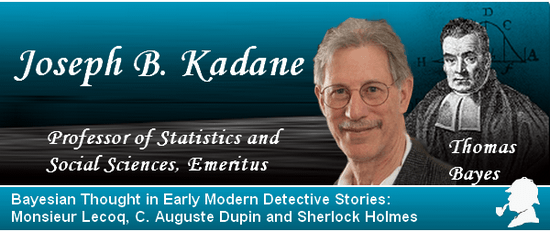
Medical history curiosities in the life and work of Arthur Conan Doyle
Author: Prof. dr. Magdolna Zajácz
The original article was published in Orvosi Hetilap (Medical Weekly) in 2008
The Akadémiai Kiadó (Academic Press) gave permission to the publication of the English version.
We would like to thank professor emeritus dr. Zoltán Papp, editor in chief of Orvosi Hetilap (Medical Weekly)
for allowing us to publish the English version of the article.
Translator: Zsófia Marincsák
(Revati), sherlockian-sherlock.com editor

The article originally was published in the ORVOSI HETILAP (Hungarian Weekly Medical Journal, Budapest).
Zajácz Magdolna: Medical history curiosities in the life and work of Arthur Conan Doyle.
[Orvostörténeti érdekességek Arthur Conan Doyle életében és műveiben.]
Orvosi Hetilap 2008; 149(10): 465-467.
Arthur Conan Doyle (1859-1930) is the classical of detective stories. He created his hero, Sherlock Holmes who is well-known around the whole world, and his name became the synonim of master detective within a short time. But relatively few people know that the author was a medical doctor, he had been trained as an ophthalmologist and had his own practice.
Conan Doyle was born in Edinburgh on the 22nd of May 1859. He came from a deeply religious Christian family. Presumably affected by a role model or an experience, he decided in his early childhood to become a doctor. He attended the medical university in Edinburgh. After finishing his studies he started a general medical practice in Southsea, in the south of England. He had very few patients, so the practice was unsuccessful. He tried hard to keep up with the development of medical science, he read lots of literature and attended conventions. A fellow doctor advised him to specialise. Conan Doyle admitted he’s right and chose ophthalmology. He took a training course in Vienna, and he earned his qualifications. [6] Returning to England he settled down in London, which was perhaps not the best decision. He started his ophthalmology practice at the street of medicals, but he did not meet more success than as a general practitioner. He had no patients, he had no money, but he had lots of free time, and as turned out later, he also had imagination as a writer. He was 31 when he decided to abandon his medical practice and try to make a living from writing. His stories, starring Sherlock Holmes were published from 1891 in the Strand Magazine, first in sequels. [1] He had a huge success, readers could hardly wait for the the next chapters. It also meant financial success for him. After that the Sherlock Holmes stories were published in book format [2,3], and had been translated to countless languages, even to Japanese and Chinese.
The effects of his medical past are clearly shown in his writings. In the detective stories he mentions several medical curiosities of his time. But before discussing these let’s analyse Conan Doyle’s personality and work a little bit.
We have already mentioned that he had been brought up in a deeply religious, Catholic environment. At university he got acquainted with the principles of Huxley and Darwin, what made him broke with religion. He became a materialist and an atheist. It is a typical trait of him that he was quite flexible in changing his principles. He was a devotee of British imperialism. This was the reason why he returned to his original profession once more in his life. During the Boer War he volunteered as an army doctor, yet he had been an elder man. Dutch peasants (the word boer means peasant in Dutch) were determined to protect the rich diamond mines in South Africa, but the land later became the colony of England. [6]
Less is known about Conan Doyle’s family life. He had a son who died during the first World War. The writer mourned him deeply and sought shelter in spiritualism, he wanted to believe that he can talk to the ghost of his deceased son. He also visited Hungary and held lectures about spiritualism.

Interestingly, his medical past and knowledge often appears in his stories. The illnesses he mentions are leprosy, yellow fever, diphteria, pulmonary disease and pneumorrhagia. He scarcely has any surgical writings, so it’s plausible that he seldom made this kind of operations. Once he mentions a character who had been identified by a half removed tattoo on his arm. Naturally at that time they did not have laser to remove tattoos, but the mention shows that skin plastic possibilities were unavailable too.
The author often describes realistic faintings, that were supposedly partly caused by heart or circulatory problems. In most of his stories he mentions neural complaints. One of his favourite expressions is ’anxiety attack’. I quote Doyle’s description:’His eyes hung, his face twitches and with a low rattle he falls on his face’.
There’s another word that needs explanation, and this is ’brain fever’. I didn’t succeeded in finding out the exact meaning of this even after consulting with neurologists. In his adventures it could last from two days till months. The word doesn’t occur in Ernő Moravcsik’s book Psychiatria and Curing from 1914. [7] It could have been depression, hysteria, neurasthenia, and even simulation. Its reason could be any event that passed beyond the human tolerance, maybe anatomical mutations, inheritance or acute diseases. And we can’t ignore that maybe it’s a mistranslation, though I haven’t found a similar mistake in the German and English literature.
I would like to say something on his genetic knowledge. He has a story which shows that it was clear for him that the negroid characteristic is dominant in a child that was born from one white and one black parent. In one of his investigations Sherlock Holmes had success because he knew that ’the handwriting of relatives is similar.’ Though this hypothesis isn’t true – one’s handwriting depends on countless things, relation is only one factor of that. [2]
After that allow me to analyze the contemporary therapy. For someone who had been fainted (or had smoke intoxication) the best remedies were ammonium and brandy. Ammonium is a pungent gas, consisiting of nitrogen and hydrogen.
In Conan Doyle’s adventures opium (the concoction of poppy) was used for anesthesia (look for opiated curry in the history of ophthalmology). [5]
We also have to talk about cocaine. It started its career when the indigenous people of Peru chewed the leaves of the coca plant to reduce the feeling of hunger and fatigue. Doyle’s hero, Sherlock Holmes also turned to cocaine from time to time to protest against the boredom of life, when he had no cases to deal with. We know that Albrecht von Graefe, the greatest and most prolific ophthalmologist of the nineteenth century could manage so much during his relatively short life with the aide of some cocaine. [10]

From Doyle’s stories we can also get a financial analysis regarding doctors. In the 1890s the employee of a stock market firm earned three pounds a week. The price of a local doctor’s practice was between 300 and 1200 pounds, depending on the number of patients. The same amount can be considered as the yearly income of the practice.
In 1895 the income of Sherlock’s brother who had excellent abilities and worked as a government official was 450 pounds. Doyle also mentions a fellow doctor who worked at King’s College and had been specialised in catalepsia. He won the prestigious Bruce Pinkerton Award but hardly got any income. It took him ten years to earn as much as to be able to put on his door-plate. ’He had more in his head than in his pocket’, as Doyle wrote.
Sometimes his past as an ophthalmologist and the effects of his knowledge appear in his writings. Once he mentions St. Vitus’s dance (chorea minor) as a symptom. ’His eyelid twitched, then closed.’ We know today that chorea minor (Sydenham chorea) is the choreiformic movement of mostly the distal parts of the facial muscles and the limbs. It’s involuntary and it intensifies with intention. It is the damage of the extrapyramidal motoric system, accompanied by an intense emotional lability. My opinion, as an ophthalmologist is that having the knowledge available today, Doyle described blepharospasmus, and not chorea minor. Blepharophasmus is rarely associated with anatomical brain damages. [9]
There’s an adventure entitled The Golden Pince-Nez. [4] He mentions such a kind of glasses in other stories as well. In the aforementioned adventure its owner lost the pince-nez. Sherlock Holmes examined it and deduced that the owner ’has a remarkably thick nose, with with eyes which are set close upon either side of it’. He also said that ’the glasses are concave and of unusual strength’. He used the word concave, and it was clear for him that short-sighted people use this kind of lense. He also knew that people do not see much without these glasses. The solution of the mystery came as well thanks to the fact that the well-planned act became impossible because of the sudden losing of sight.
I would like to end my writing with the story which only a person with ophthalmologic knowledge could write. Its title is Sherlock Holmes and the Sport of Kings, and it was published with the title Silver Blaze. The German translation of it bore the title Der verlorene Rennpferd (which means The Lost Racehorse). [5]
Silver Blaze was an exceptional horse who won all its races. Its outstanding trainer was found killed outside on the field close to the stable the day before a very important race. The cause of his death was a skull fracture caused by a blunt injury. The police found nothing. Then came the brilliant Sherlock Holmes and presented the murderer soon: it was the horse.

As Holmes found out, the trainer secretly had a girlfriend who was a waster, so the man had been pushed for money. He had been obliged to accept a larger sum of money from the owner of the rival stable. The trainer should have made Silver Blaze lame so it would loose the race. The plan was to cut the tendon on one of the animal’s hind legs. It could only be Conan Doyle who came up with the idea that the most appropriate tool for this would be a cataract knife. It’s pointy, sharp and narrow, so it doesn’t leave a distinct mark in the horse’s fur. The tendon can be cut in a moment, and as a result the horse won’t be able to run fast. The trainer succesfully practised the cut three times on sheep. At the night when he wanted to do it on the horse, the stable-boys received a good amount of opium with their curry, what made them sleep deep. The trainer lead the horse to the nearby field, but the clever animal felt the danger of the unusual situation and kicked him, fracturing his skull and causing his death.
Conan Doyle had been knighted in 1902 acknowledging his achievements both as a writer and as an army doctor. Lots of people read and liked his stories. According to Emil Schultheisz * his life work, the series of detective stories was rather a logical game than a bunch of mystery stories. [8]
* Note: Emil Schultheisz (1923-2014) was a Hungarian physician, medical historian, academic and the candidate in medical studies. He was the minister of healthcare between 1974 and 1984. From 1968 to 1974 he was the director-general of the Semmelweis Museum of Medical History. He researched the medical history of medieval Europe and Hungary.
The article originally was published in the ORVOSI HETILAP (Hungarian Weekly Medical Journal, Budapest).
Zajácz Magdolna: Medical history curiosities in the life and work of Arthur Conan Doyle.
[Orvostörténeti érdekességek Arthur Conan Doyle életében és műveiben.]
Orvosi Hetilap 2008; 149(10): 465-467.

ABOUTH THE AUTHOR:
Dr. Magdolna Zajácz (1932-2013) was professor emeritus at the Ophthalmology Clinic of the University of Debrecen’s Medical and Scientific Centre. She was a well-known and acclaimed personality of Hungarian and worldwide ophthalmology. Her scientific work is extensive and very rich. During her decades-long career she received several Hungarian and international acclaims, professional and governmental awards.
Translator: Zsófia Marincsák
(Revati), sherlockian-sherlock.com editor

" Medical history curiosities in the life and work of Arthur Conan Doyle "
Author: Prof. dr. Magdolna Zajácz - DOI: 10.1556/OH.2008.H-2172
Resources:
[1] Britannica Hungarica Világenciklopédia. 1996. 5. kötet, 3460. (Britannica Hungarica World Encyclopedia. 1996. Vol. 5, p. 3460)
[2] Conan Doyle, A.: A sátán kutyája. Az érdekes újság kiadóhivatala. Budapest. Légrádi könyvnyomda.
(The Hound of the Baskervilles. Publisher of Interesting Newspaper. Budapest. Légrádi Press.)
[3] Conan Doyle, A.: Sherlock Holmes emlékiratai. Európa Könyvkiadó, Budapest, 1974. (The Memoirs of Sherlock Holmes. Európa, 1974.)
[4] Conan Doyle, A. : Az arany szemüveg. Hungoprint, Budapest, 1944. (The Golden Pince-Nez. Hungoprint, Budapest, 1944.)
[5] Conan Doyle, Sir A.: Sherlock Holmes and the Sport of Kings. Oxford University Press. Oxford Bookworms, 2003.
[6] Hegedűs, G.: Arthur Conan Doyle. http://www.literatura.hu/irok/real/doyle.htm
[7] Moravcsik, E.: Elmekórtan és Gyógytan. Universitas, Budapest, 1914.
(Psychiatria and Curing. Universitas, Budapest, 1914.)
[8] Schultheisz, E.: Az orvoslás története. Magyar Tudománytörténeti Szemle Könyvtára. Budapest-Piliscsaba, 1997.
(The history of medicine. Library of Hungarian History of Science Review. Budapest-Piliscsaba, 1997.
[9] Zajácz, M. - Kerek, A.: A blepharospasmus kezelése. Szemészet, 1998, 135, 123-129.
(The treatment of blepharospasmus. Ophthalmology, 1998, vol. 135, p. 123-129.)
[10] Zajácz, M.: A Graefe családról. Szemészet, 2000, 137, 237-240. (On the Graefe family. Ophthalmology, 2000, vol. 137, p. 237-240.)
The original article was published in Orvosi Hetilap (Medical Weekly) in 2008
The Akadémiai Kiadó (Academic Press) gave permission to the publication of the English version.
|
You can visit Orvosi Hetilap here:


Recommended site:
Sherlock Holmes
Conan Doyle’s Sherlock Holmes novels and short stories
Sir Arthur Conan Doyle and Hungary


Bayesian Thought in Early Modern Detective Stories
Professor Joseph Born Kadane and the Institute of Mathematical Statistics
gave their permission to publish this article on our website.
|










